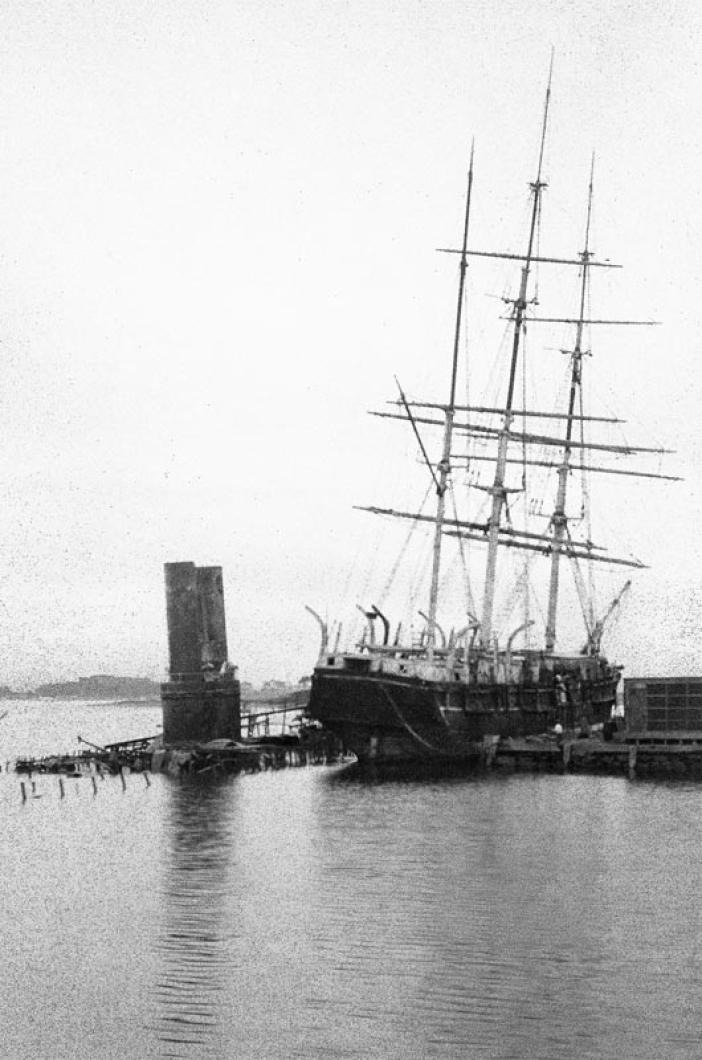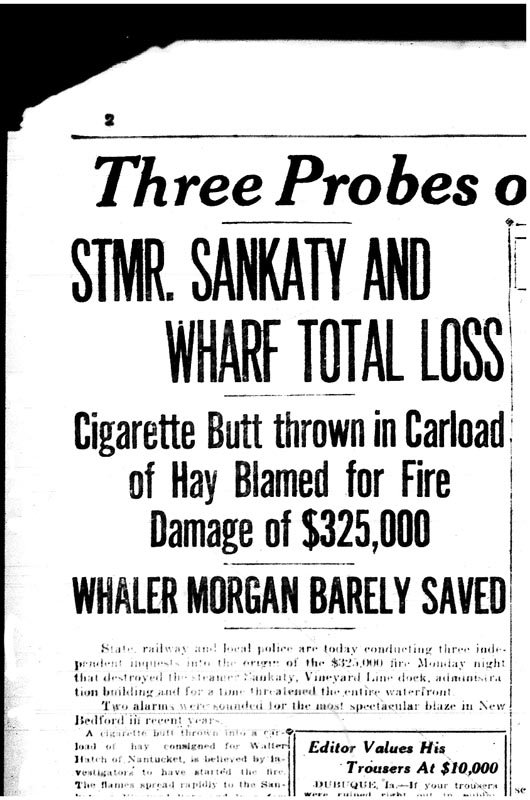Islanders from Nonouti attacked her in the western Pacific. She caught fire off the Azores, shipped seas over her stern during a storm as she approached Cape Horn and steered around mines during World War I. Sailing through and around all this danger while whaling on the far sides of the globe, it’s an irony that the Charles W. Morgan faced her greatest peril three years after she retired and while lying alongside a wharf just across the Acushnet River from New Bedford, the town she called home port.
It happened in the darkness of June 30, 1924. Only two days before, the New Bedford Mercury had announced that the Morgan — in those days one of just two wooden whaling vessels left in the United States — would soon be presented to the city as a shrine to whaling and moored at a marine park. She was resting at Union Wharf in Fairhaven, directly across the harbor, when a trim steamboat called the Sankaty, which carried passengers and a few cars back and forth to the Vineyard and Nantucket, suddenly caught fire at the New Bedford wharf of the New England Steamship Company.
Someone had apparently thrown a cigarette into bails of hay on the pier, and the fire quickly spread to barrels of kerosene, which blew up and set the wooden decks of the Sankaty aglow. Her captain and four crewmen sleeping aboard leaped over the side and were rescued as the steamer burned through the lines that tied her to the wharf. She began to drift across the harbor toward Fairhaven and the Morgan.
“From a point of vantage on Merrill’s Wharf the Sankaty lighted up the sky so that objects on the Fairhaven shore became plainly visible,” reported the New Bedford Evening Standard. “Coming in line of the bark Charles W. Morgan, her lofty spars were silhouetted against the black sky to the east, making a spectacular picture.”
The Sankaty, her own decks outlined by the inferno, drifted up against the port side of the Morgan near her stern. The timbers and planking of the whaler had dried out in retirement, yet her timbers were still saturated by the oil of countless whales killed over the span of eight decades. She could not have been more vulnerable to fire.
“Preparedness on the part of the Fairhaven fire department was the sole salvation of the famous whaling ship,” said the Mercury. “Almost as soon as the Sankaty’s hawsers burned away and allowed the steamer to float out into the river, the department across the river was ordered out.
“For a time it seemed as though the efforts of the Fairhaven department would be unavailing. The heat from the steamer was terrific. Despite the five streams of water poured down into the burning hulk from the deck of the Morgan the whaler caught fire near the stern. For a few minutes it seemed as though it would be impossible to save her. . . .”
But Fairhaven firefighters, as well as crewmen with a hose aboard the tug John Duff, managed to douse the Sankaty fire, sinking the steamer alongside the Morgan, whose stern was only blackened by the flames. The Sankaty was later raised and rebuilt, serving a career as a ferry on Long Island Sound and later as the minesweeper and passenger steamer Charles A. Dunning in maritime Canada. She was scrapped in 1964.
Today the steam whistle of the Sankaty-Dunning sounds from the wheelhouse of the ferry Martha’s Vineyard. And this week, exactly 90 years after the Sankaty nearly cost the Morgan her life, the whistle will sound many times across Vineyard Haven harbor while the Morgan pays her historic visit to the Island.








Comments
Comment policy »